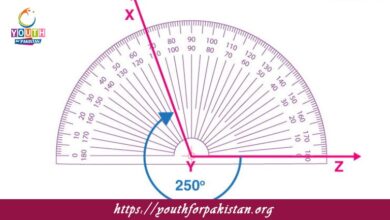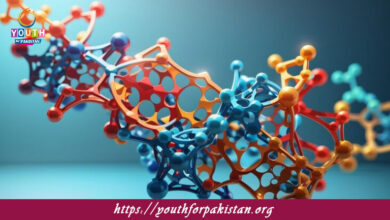Work and Energy MDCAT MCQs with Answers

Welcome to the Work and Energy MDCAT MCQs with Answers. In this post, we have shared Work and Energy Multiple Choice Questions and Answers for PMC MDCAT 2024. Each question in MDCAT Physics offers a chance to enhance your knowledge regarding Work and Energy MCQs in this MDCAT Online Test.
Work and Energy MDCAT MCQs Test Preparations
Work is defined as:
a) The product of force and distance moved in the direction of the force
b) The product of mass and velocity
c) The rate of change of momentum
d) The difference between kinetic and potential energy
The SI unit of work is:
a) Joule
b) Newton
c) Watt
d) Meter
The work done by a force is maximum when:
a) The force is perpendicular to the direction of motion
b) The force is parallel to the direction of motion
c) The force is opposite to the direction of motion
d) The direction of motion is zero
The work done when a force acts perpendicular to the direction of displacement is:
a) Zero
b) Equal to the force multiplied by displacement
c) Equal to the displacement divided by force
d) Equal to the force times the displacement squared
Kinetic energy depends on:
a) Mass and velocity
b) Mass and acceleration
c) Force and distance
d) Displacement and time
The work-energy theorem states that:
a) Work done on an object is equal to its change in kinetic energy
b) Work done is equal to the force applied
c) The energy of a system is constant
d) Work done is equal to the potential energy of an object
Potential energy depends on:
a) Mass and height
b) Mass and velocity
c) Force and distance
d) Displacement and time
The principle of conservation of energy states that:
a) Energy cannot be created or destroyed, only transformed
b) Energy is always increasing in a closed system
c) Energy is only conserved in isolated systems
d) Energy is always lost to the surroundings
The work done by a constant force on an object moving in a straight line is equal to:
a) The product of the force and the displacement of the object in the direction of the force
b) The sum of the force and the displacement
c) The difference between the force and the displacement
d) The product of force and the velocity
The energy possessed by an object due to its position is called:
a) Potential energy
b) Kinetic energy
c) Thermal energy
d) Mechanical energy
The unit of power is:
a) Watt
b) Joule
c) Newton
d) Meter
Power is defined as:
a) The rate at which work is done
b) The total amount of work done
c) The force applied per unit area
d) The energy transferred per unit mass
If a car’s speed is doubled, its kinetic energy becomes:
a) Four times greater
b) Twice as great
c) Half as great
d) The same
Work done against friction results in:
a) The conversion of kinetic energy into thermal energy
b) The increase in potential energy
c) The decrease in the object’s velocity
d) The increase in gravitational potential energy
The work done to lift an object is equal to:
a) The increase in the object’s potential energy
b) The decrease in the object’s kinetic energy
c) The object’s weight times the distance
d) The object’s mass times the velocity
The energy stored in a stretched or compressed spring is known as:
a) Elastic potential energy
b) Gravitational potential energy
c) Kinetic energy
d) Thermal energy
In a closed system, if no external work is done, the total energy of the system:
a) Remains constant
b) Increases
c) Decreases
d) Becomes zero
The work done on an object is measured in:
a) Joules
b) Newtons
c) Watts
d) Meters
When a machine is used to lift a load, the work done by the machine is:
a) Equal to the increase in the load’s potential energy
b) Equal to the machine’s power output
c) Less than the work done on the machine
d) The same as the machine’s power output
If a person lifts a box and places it on a shelf, the work done is:
a) Equal to the box’s weight multiplied by the height of the shelf
b) Equal to the box’s weight multiplied by the distance moved horizontally
c) Equal to the height of the shelf multiplied by the box’s mass
d) The same as the energy required to move the box horizontally
In a frictionless environment, the work done on an object:
a) Results in a change in its kinetic energy
b) Results in a change in its potential energy
c) Is equal to the object’s total energy
d) Is equal to its power output
The change in potential energy of an object depends on:
a) The object’s mass, height, and gravitational field strength
b) The object’s speed and distance traveled
c) The object’s volume and density
d) The object’s temperature and pressure
The principle of conservation of mechanical energy states that:
a) Total mechanical energy in a closed system remains constant if only conservative forces are acting
b) Total mechanical energy is always increasing
c) Total mechanical energy is always decreasing
d) Total mechanical energy is zero in a closed system
The energy required to stretch or compress a spring is known as:
a) Elastic potential energy
b) Kinetic energy
c) Gravitational potential energy
d) Thermal energy
The work done by a variable force can be calculated using:
a) The area under the force vs. displacement graph
b) The force multiplied by the maximum displacement
c) The average force multiplied by the average displacement
d) The total distance traveled
The work done to overcome friction is converted into:
a) Thermal energy
b) Kinetic energy
c) Gravitational potential energy
d) Elastic potential energy
In the context of work and energy, the term “power” refers to:
a) The rate at which work is done
b) The total amount of work done
c) The force applied over a distance
d) The energy required to do work
The energy required to increase the velocity of an object depends on:
a) The object’s mass and the square of its velocity
b) The object’s mass and its acceleration
c) The object’s weight and the height it is lifted
d) The object’s speed and distance traveled
The efficiency of a machine is defined as:
a) The ratio of useful work output to total work input
b) The total work output divided by the power input
c) The ratio of power output to the power input
d) The total work done divided by the distance moved
The work done by gravity on an object moving horizontally is:
a) Zero
b) Equal to the object’s weight
c) Equal to the object’s mass times the horizontal distance
d) Equal to the object’s potential energy change
The work done to move an object against a constant force is:
a) The product of the force and the displacement
b) The sum of the force and the displacement
c) The difference between the force and the displacement
d) The square of the force
In a frictionless environment, the total mechanical energy of an object is:
a) The sum of its kinetic and potential energy
b) Equal to its kinetic energy only
c) Equal to its potential energy only
d) The difference between kinetic and potential energy
The energy transferred when a force moves an object through a distance is known as:
a) Work
b) Power
c) Energy
d) Force
The work done to stretch a spring is directly proportional to:
a) The square of the displacement from the equilibrium position
b) The displacement from the equilibrium position
c) The velocity of the spring
d) The time of stretching
When a machine is used to lift a load, the work done on the machine is:
a) The same as the work done by the machine
b) Less than the work done by the machine
c) More than the work done by the machine
d) Zero
If you are interested to enhance your knowledge regarding Physics, Chemistry, Computer, and Biology please click on the link of each category, you will be redirected to dedicated website for each category.





